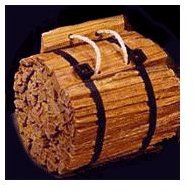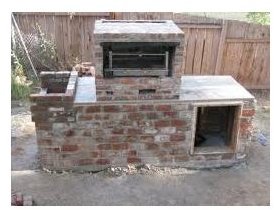Make Summer Grilling more Energy Efficient
Energy Efficient Backyard Grilling - Basic Grilling Options
The hot season peeps out and now it’s the time to enjoy the backyard barbecue. Stepping forward to more energy efficient methods will ensure that everyone shows their responsibility to save the earth. Of course, a natural gas grill is more environmentally friendly and energy efficient than the use of propane gas, but it depends on how it is used. There are various different options in grilling and the basic ones are:
- Propane gas – gas grills
- Natural gas grills
- Charcoal grills – (lump charcoal: charred wood chunks or use of manufactured briquettes)
- Electric grills
- Wood fire grilling
Barbecue Grilling Fuels
Most people think that that natural gas is the most appropriate and energy efficient way to barbeque. It is thought to be the cleanest and most environmentally friendly method when compared to electricity and other power sources. Winning a “Green Grill” award is easy when steps have been taken to charge the electric grills via wind or sun. Grilling with biogas, however, is more efficient, or at least greener, than any other source except solar.
Cooking with Gas
Backyard grilling will be more fun when used with efficient and reliable biogas. For biogas each cubic meter (m3) contains about 6 kWh of fattening energy. Biogas is non-fossil methane in which the methane holds up the (GHG) heating factor 21 times higher than CO2. More appropriately, this gas is 60-70% methane and 30-40% carbon dioxide, with smaller amounts of other trace gases. At room temperature and pressure, this biogas will stay in gaseous form.
Combustion of biogas converts methane into CO2 and reduces the GHG impact by over 20 times. Energy in the biogas counts that cubic meter (m3) of biogas as containing the equivalent of 6 kWh of calorific energy. However, if it is converted to electricity, we normally get 2kWh of useable electricity from it.
The presence of the corrosive hydrogen sulphate is a naturally occurring smelling agent (to detect leaks) and only needs to be simply scrubbed out before running the gas in an internal combustion engine. According to the Environmental Protection Agency, 60 percent of the emissions of nitrous oxide (a greenhouse gas 270 times more powerful than carbon dioxide) “comes from conventional agriculture,” probably feedlots in general, but also in livestock systems where byproducts are not treated as they could be. Integrated biogas systems can harness these emissions and transform them into valuable soil building amendments.
Using Biogas – Bottled Gas
Instead of being mixed with natural gas and fed into the pipeline, upgraded biogas may also be bottled and then used as a substitute for natural gas in industries, households, or fuel stations. However each burner must have the jet removed. This is a small orifice designed to let the high pressure bottled gas through slowly. Biogas is at a much lower pressure. In most cookers these jets are removable in case the cooker is to be used with mains gas which is similar to biogas.
By removing CO2 and trace acidic gases like H2S and moisture, biogas can be converted into natural gas (which is mainly methane). Natural gas is a more environmentally friendly, and its usage leads to lower engine wear in internal combustion engines. CO2 and H2S can be removed successfully from biogas using suitable scrubber techniques. The remaining methane gas (natural gas) can be compressed to high pressures of the order of 240 bar using multistage compression, and CNG cylinders can be filled.
Charcoal Grilling
Although conventional wisdom continues to support charcoal grills, which are not an entirely bad choice; the truth is that both propane and biogas are more eco-friendly. David Wardle of the Swedish University of Agricultural Science, in a study about the limitations of charcoal, stated that charcoal and wood tend to be inexpensive, but wood burns dirty and charcoal grills are messy and typically have fewer amenities than other types of grills.
Charcoal is traditionally considered to be the least eco-friendly mode for grilling. A report in Elsevier’s Environment Impact Assessment Review states that charcoal grilling is less eco-friendly than propane grilling. The article further reports that in the United Kingdom carbon outcome from charcoal grilling is almost three times higher than carbon emissions from propane gas grilling. The study also states that propane gas grills are more energy efficient when compared to charcoal grills, are more efficient in production costs and carbon expenses, and eventually they are more efficient in cooking, too.
Charcoal grilling is done by heating the wood in an open furnace, and their commercial yields are around the 20-30% range, i.e. the rest of the wood is converted into gas and eliminated in the environment. By contrast propane gas is in about the 90% range. Moreover the charcoal grill emits around 12 pounds of carbon dioxide in a hour, compared to similar size gas grills that emit around 5 pounds. Ultimately, charcoal is the least efficient alternative to propane.
But contrast to this to what Department of Energy Oak’s Ridge National Laboratory researcher Tris West says. She states that make using of charcoal will give a long-run advantage:
Charcoal is made from wood. It is a renewable energy source, which means once that CO2 is emitted into the atmosphere, forests are then regrown wherever they were cut down and they take up CO2 from the atmosphere. There’s a carbon cycle. We release it and then it’s taken back up by the trees.
There is going to be twice as much carbon released from your charcoal grill as there is from your propane grill. When we consider the total carbon cycle and the charcoal as a renewable energy source because it’s from wood, the story is completely flipped and you have more emissions from natural gas because emissions from charcoal are net zero.
Manufacturer Certifications and Standards
A huge number of manufacturers of gas grills are available in the market. A lot of variation in size, quality, portability, and other basic features are evident. Though United States manufacturers are most represented by sheer numbers, we can also find many of most popular Japanese and Chinese manufacturers in the market.
Most of the manufactures self-servingly state that they have achieved their strategic plan and have implemented a nationally reliable regulation plan and method for gas appliances and equipment energy efficiency. In many cases, this strategy is the most important package, and it is implemented by the MCE (Ministerial Council on Engineering - Australia) under the National Framework for Energy Efficiency (NFEE). Beside these are standards for cooking appliances certified with “Energy Star” ratings, in which it states the international standard for energy efficient products. This certification originated in the United States.
Sawdust
It is important to also consider sawdust, the eco-friendly compressed waste product of wood product production that emits less carbon because it contains no glue, paraffin, and wax binding agents. Sawdust endows kindling with reliable, steady heat with less ash to pollute the air. As sawdust is produced from domestic resources, it is really cheaper than any other fuel and creates far less pollution. Moreover it is intended to enhance manufacturer’s specifications in all the EPA-approved fire places and stoves.
Conclusion
In all cases, the use of energy efficient backyard grills should be better understood before it can be considered a major factor in alleviating human-induced rises in carbon-based green house gases. There is also the lawn mower to consider!
Energy Efficient Backyard Grilling

References
Further Reading
Oak Ridge National Laboratory, fourth of July no picnic for the nation’s environment.
Oak Ridge National Laboratory, grilling with charcoal can benefit environment long-term.
Hearth, Patio, and Barbeque Association statistics
Sources
Elsevier (2009, May 13). Grilling with Charcoal Less Climate-friendly Than Grilling with Propane, Study Finds. ScienceDaily. Retrieved August 25, 2010, from https://www.sciencedaily.com /releases/2009/05/090512093254.htm
Eric Johnson. Charcoal versus LPG grilling: A carbon-footprint comparison. Environmental Impact Assessment Review, 2009; DOI: 10.1016/j.eiar.2009.02.004
Swedish University of Agricultural Sciences (2008, May 4). Limitations of Charcoal as an Effective Carbon Sink. ScienceDaily. Retrieved August 25, 2010, from https://www.sciencedaily.com /releases/2008/05/080501180247.htm
